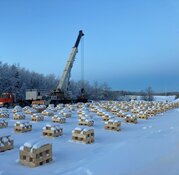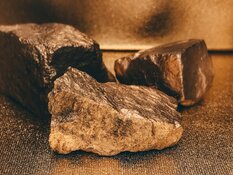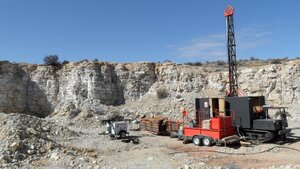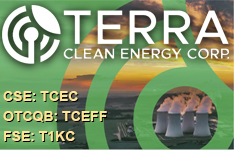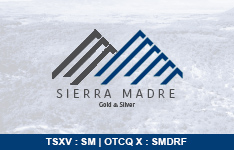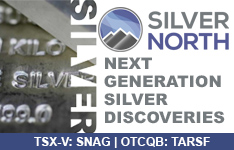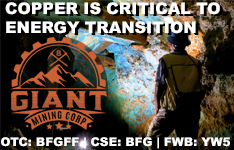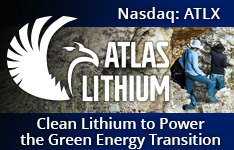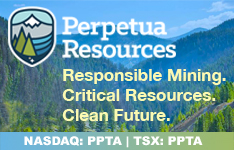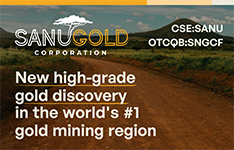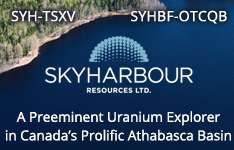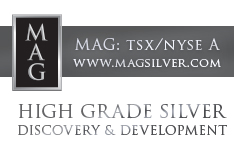Perpetua Resources Corp. (PPTA:TSX; PPTA:NASDAQ) announced the commencement of detailed engineering studies and a new procurement contract with Idaho Power Company to advance its Stibnite Gold Project toward a construction decision. The move follows the successful completion of basic engineering and the release of the company's 2024 Financial Update, which confirmed a US$3.7 billion after-tax net present value (NPV) with a 27% internal rate of return (IRR) at spot prices.
The Stibnite Gold Project, located in Idaho, is positioned to become the lowest-cost gold project in the Tier 1 jurisdictions of the United States, Canada, and Australia. The project's expected all-in sustaining costs (AISC) of US$435 per gold ounce in its first four years, driven by low-cost hydroelectric power and antimony by-product credits, contribute to its cost-efficiency. Over the project's 15-year lifespan, AISC is forecast to average under US$760 per ounce.
"The Stibnite Gold Project is among an elite class of gold projects, with industry-leading costs, a world-class reserve of 4.8 million gold ounces and an annual production profile of approximately 300,000 ounces over a 15-year life," said Jon Cherry, Perpetua's President and CEO, in a company news release.
The company's financial update indicates robust project economics even at lower commodity prices. At consensus prices of US$2,100 per ounce of gold, US$10.00 per pound of antimony, and US$27.00 per ounce of silver, the project is estimated to yield an after-tax NPV of US$1.4 billion with a 15.4% IRR. Under spot prices of US$2,900 per ounce of gold, US$21.00 per pound of antimony, and US$31.50 per ounce of silver, the project’s expected annual EBITDA averages US$745 million.
In addition to engineering advancements, Perpetua has signed a procurement contract with Idaho Power to secure powerline materials for the project. "We’re pleased to partner with Perpetua Resources to power the country's next major mineral resource project right here in Idaho," said Lisa Grow, President and CEO of Idaho Power, in the same news release.
The Stibnite Gold Project is set to supply antimony, a critical mineral used in national defense, energy storage, and various technological applications. The company has secured a US$59.2 million Technology Investment Agreement through the Defense Production Act Title III to support the project's development.
Digging Into Metals and Mining
According to a February 1 report from Excelsior Prosperity, gold reached new all-time highs, with spot gold climbing to US$2,862.90 before closing at US$2,835.00. The report highlighted that the ongoing gold bull market, which began in December 2015, continued to show strength as demand from central banks remained elevated. The report noted that gold and silver stocks have mostly maintained their gains since their respective bottoms in early 2016.
In a February 4 article, John Newell from John Newell & Associates observed that the junior mining sector, including base metals like copper, showed signs of a potential breakout after years of depressed valuations and limited liquidity. Newell indicated that technical patterns, such as an inverse head-and-shoulders, suggested a bullish outlook for junior miners, particularly with increasing interest in gold, silver, and copper exploration.
Copper, often seen as an economic bellwether, experienced significant volatility in early 2025. A February 4 report of Mining Weekly noted that copper prices rose after a temporary reprieve from U.S. tariffs on Canadian and Mexican imports. However, base metals faced headwinds due to subdued demand from China, the world's largest consumer. Bloomberg reported that BHP anticipated a 70% increase in global copper demand by 2050, driven by energy transition technologies and the electrification of transportation. Yet, declining ore grades and aging mines present long-term supply challenges.
Ahead of the Herd reported on February 7 that the global copper market continued to face supply challenges amid growing demand for clean energy applications. The article cited BHP's chief commercial officer Rag Udd, who projected a 70% increase in global copper demand by 2050, driven by energy transition goals and technological advancements. The report noted that copper's role in renewable energy infrastructure, electric vehicles, and AI-driven data centers would contribute to this demand growth, with the energy transition sector alone expected to account for 23% of copper consumption by 2050.
On February 8, Ahead of the Herd published another update highlighting the long-term supply challenges copper producers face. The article cited BloombergNEF's forecast that the sector will require $2.1 trillion in investments by 2050 to meet net-zero goals. The report also mentioned declining ore grades, particularly in Chile, and the potential for geopolitical disruptions, such as resource nationalism in Peru and Panama. Cochilco, Chile's copper commission, projected a copper price of US$4.25 per pound for 2025 and 2026, with demand expected to outpace supply this year, resulting in a deficit of 118,000 tonnes. The report also referenced BHP's concerns about the declining grade of copper mines, which has decreased by 40% since 1991.
Expert Insights Highlight Positive Outlook for Perpetua Resources
On January 7, H.C. Wainwright & Co. analyst Heiko Ihle highlighted the milestone as a key derisking event, emphasizing the potential of the project. "Our attention shifts toward the firm receiving its necessary federal and state permits while securing financing for the project," Ihle stated. The firm's updated model raised the target price from US$22 to US$25, representing a potential 96% increase from the company's share price of approximately US$12.77 at the time of the report. The revision reflected an adjustment to the discount rate, lowered to 11% to account for reduced risk, and an increase in the forecasted antimony price to US$12 per pound from US$6.
In addition to the project's gold prospects, analysts pointed to Perpetua's strategic positioning within the antimony supply chain. Ihle noted that the company had entered into agreements with United States Antimony Corp. for metallurgical testing and with Sunshine Silver Mining & Refining Co. to explore potential processing collaborations. "We believe that these partnerships could ultimately strengthen a closed-loop American supply chain for antimony," Ihle wrote, particularly in light of recent export restrictions imposed by China.
Looking ahead, H.C. Wainwright projected continued institutional interest in Perpetua as it progresses with remaining permits and financing efforts. Ihle referenced the U.S. Export-Import Bank's previously stated willingness to consider a loan of up to US$1.8 billion to support the Stibnite project. Once operational, the mine is expected to produce approximately 450,000 ounces of gold in its first four years and supply up to 35% of the U.S. antimony demand in the initial six years of production. These projections are supported by the project's measured resources of 4.8 million ounces of gold and 148 million pounds of antimony, signaling significant growth potential for the company in the years ahead.
Perpetua Resources is moving forward with plans to finalize the remaining ancillary permits and advance financing discussions for the Stibnite Gold Project. The company aims to secure construction financing and is pursuing a potential increase in its current US$1.8 billion letter of interest from the U.S. Export-Import Bank (EXIM), citing a projected 15% rise in U.S. job creation tied to the project's development.
The company is preparing for construction in 2025, contingent on completing the permitting process and securing funding. Basic engineering work, conducted by Ausenco Engineering USA South Inc., has positioned the project for construction readiness. The project's design also aligns with environmental goals, including plans to restore historical mining areas and power operations using a low-emissions hydroelectric grid.
Perpetua's long-term plans also include supplying antimony to Ambri, a U.S.-based company developing liquid metal batteries for energy storage. As global demand for energy transition metals continues to grow, Perpetua's focus on domestic production of gold and antimony could position the company as a key contributor to the U.S. mineral supply chain in the years ahead.
Ownership and Share Structure
 Streetwise Ownership Overview*
Streetwise Ownership Overview*
Perpetua Resources Corp. (PPTA:TSX; PPTA:NASDAQ)
According to Refinitiv, management and insiders own approximately 0.50% of Perpetua, and institutions own about 63.52%.
Top institutional shareholders include Paulson & Co at 35.30%, Sun Valley Gold LLC with 4.23%, Sprott Asset Management LP with 3.98%, Kopernik Global Investors LLC with 3.60%, and Sprott Asset Management USA Inc at 3.16% reported by Refinitiv.
Of insiders, Chief Financial Officer Jessica Marie Largent owns 0.14%, former President and CEO Laurel Sayer owns 0.13%, and Director Chris Robinson owns 0.09%.
Refinitiv reports that there are 73 million shares outstanding and 64.19 million free float traded shares. The company has a market cap of US$807 million and trades in a 52-week range between US$2.69–US$13.18.
| Want to be the first to know about interesting Gold and Critical Metals investment ideas? Sign up to receive the FREE Streetwise Reports' newsletter. | Subscribe |
Important Disclosures:
- Perpetua Resources Corp. is a billboard sponsor of Streetwise Reports and pays SWR a monthly sponsorship fee between US$4,000 and US$5,000.
- Doresa Banning wrote this article for Streetwise Reports LLC and provides services to Streetwise Reports as an independent contractor.
- This article does not constitute investment advice and is not a solicitation for any investment. Streetwise Reports does not render general or specific investment advice and the information on Streetwise Reports should not be considered a recommendation to buy or sell any security. Each reader is encouraged to consult with his or her personal financial adviser and perform their own comprehensive investment research. By opening this page, each reader accepts and agrees to Streetwise Reports' terms of use and full legal disclaimer. Streetwise Reports does not endorse or recommend the business, products, services or securities of any company.
For additional disclosures, please click here.


